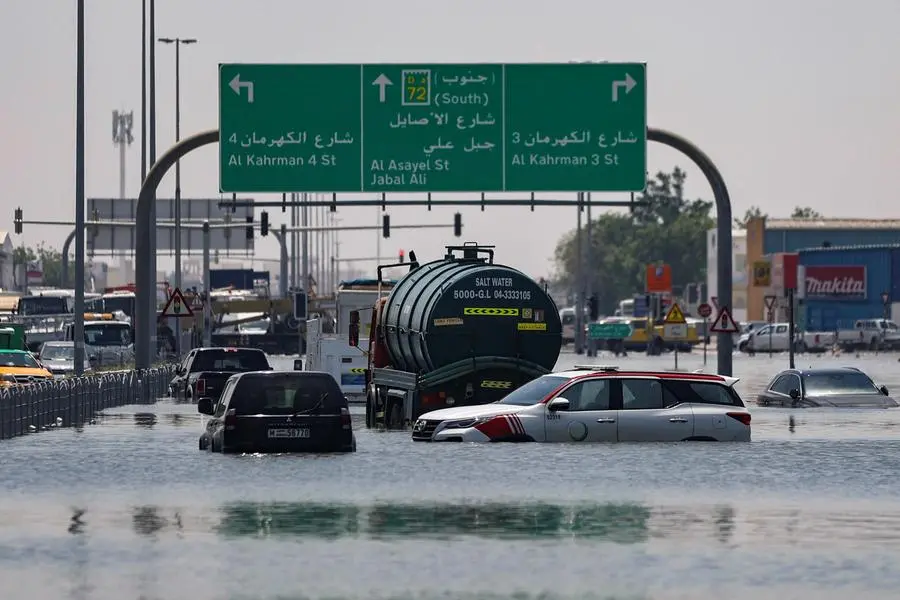PHOTO
The country recorded 6.04 billion cubic metres of rain last week as inclement weather struck the UAE on Tuesday.
It’s worth noting that the country typically receives approximately 6.7 billion cubic metres of rainfall annually.
With rainfall exceeding 100 mm within 24 hours at numerous locations — the country struggled with unparalleled flooding, affecting highways, residences, and vital infrastructure on 16 April. Over four stations recorded over 200.0 mm of rain on that day. This marked the most significant rainfall event in the past 75 years.
When Khaleej Times reached out to the National Centre of Meteorology (NCM), Dr Ahmed Habib said, “Floods have occurred previously, but the magnitude and the geographical reach of the recent event are unparalleled. Within a few hours, an unprecedented amount of rainfall, exceeding 100mm, was recorded in different stations from the north of Abu Dhabi to the Ras Al Khaimah border — a phenomenon never witnessed before. Consequently, an estimated total of over 6.04 billion cubic meters of water inundated the UAE.”
Unprecedented event
The veteran weatherman explained that in over three decades of his experience he hasn’t witnessed anything like this before.
“We need a deeper study to fully understand what happened. From my experience here (UAE) in the past 22 years, we’ve not had a similar situation and over ten years of my experience in Egypt, I haven’t encountered this kind of a situation there either,” he added.
Though predicting weather too far in advance with precision is challenging, he clarified that forecasting whether the UAE will be impacted by such severe weather in the future is also a difficult task.
“The occurrence varies based on circumstances, but in the upcoming days, such a scenario isn't anticipated. It also hinges on shifts in the global environment. However, whether it's attributable to global warming remains under scrutiny and is a subject of deeper study. There are no indications of such an event in the next five days,” he added.
How is the forecast done?
When inquired about the Met department’s data collection methods and how the country manages to forecast this so accurately, Habib explained they utilise numerous models and numerical weather predictions to anticipate conditions in both the surface and upper layers of the atmosphere.
“Our focus includes assessing pressure systems through four daily update cycles: at 4am and 10am local time, followed by updates at 4pm and during the night. We meticulously observe, maintain charts, analyse data, and incorporate information from UAE stations and neighbouring countries.”
He stressed that the country also closely monitors weather patterns in neighbouring Saudi Arabia and Oman.
“We assess parameters such as wind movement to forecast weather and its potential impact on the UAE.”
However, Habib highlighted there has been a recent trend of non-specialists spreading misinformation. “People must rely on official government resources for accurate information instead of watching videos on the internet which spread wrong information. Additionally, it's crucial to recognize that weather predictions are most accurate for the near future,” added Habib.
Copyright © 2022 Khaleej Times. All Rights Reserved. Provided by SyndiGate Media Inc. (Syndigate.info).



















